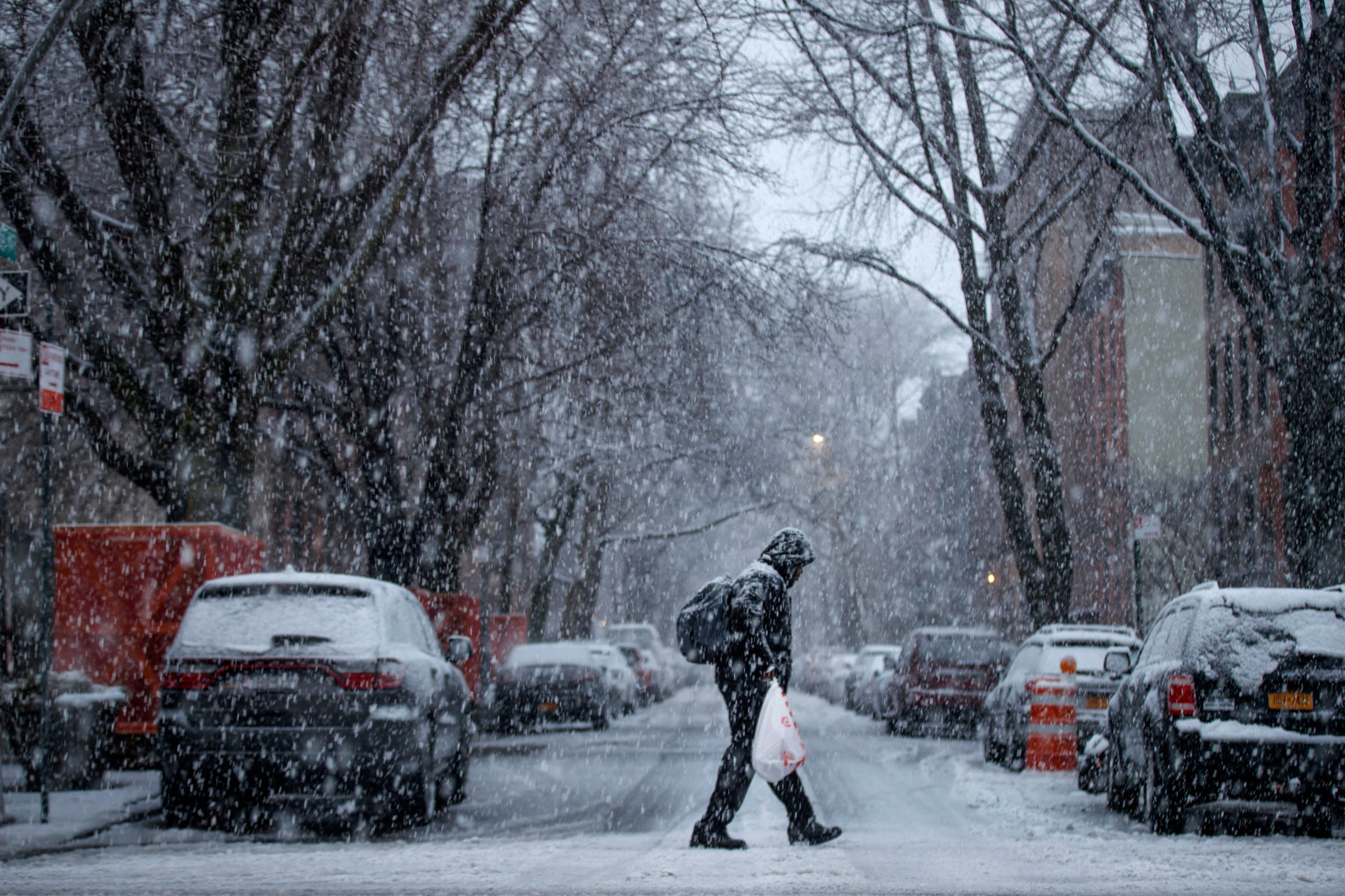
Proximity to the ocean and just the right elevation helped spare New York City from the worst of Wednesday’s nor’easter that dumped more than two feet of snow elsewhere in the region and left more than 850,000 homes and businesses without power.
About 3 inches (7.6 centimeters) fell in Manhattan’s Central Park — well short of the forecast of 6 to 10 inches. It was a different story north and west. Parts of Orange and Rockland counties in New York got 26 inches. Montville, New Jersey — about 32 miles (52 kilometers) northwest of Manhattan — got 26.8 inches, the National Weather Service said.
Why the disparity?
“Ocean and elevation — the combination of both,” said Rob Carolan, a meteorologist with Hometown Forecast Services Inc. in Nashua, New Hampshire. “As you go inland you are going up in elevation and it made all the difference in the world. It was snowing there when it was raining in the city and it gave them a head start.”
Misery Aplenty
The storm, which is still dropping snow across northern New England, caused plenty of misery. It delayed travelers on the Long Island Rail Road. At the height of the storm, 2,787 flights were canceled around the U.S. Another 465 were scrubbed Thursday, mostly from Boston’s Logan International Airport, according to FlightAware, a Houston-based airline tracking service.
Metro-North Railroad suspended service on the New Canaan and Danbury branches and warned riders on other lines to “expect extremely crowded conditions and delays,” the commuter line said on its website. Amtrak suspended trains between New York and Boston. Service was scheduled to resume at 11 a.m. Thursday.
At least 857,000 customers from New Jersey to Maine were without power Thursday at 8 a.m., according to data compiled by Bloomberg from utility websites.
The storm’s path also held down snow totals in New York City, Carolan said. A wedge of dry air pushed into the region as the storm arrived, robbing it of some of its punch. Warmer temperatures near the ground didn’t help, either, said Faye Morrone, a National Weather Service meteorologist in Upton, New York.
“There were several hours of moderate to heavy snow in Central Park, but it just didn’t add up,” Morrone said. “The areas outside the city, where it was a little colder, were able to realize the potential when they got into the heavier snow.”
Challenging Forecast
Meteorologists struggled to read the storm as it approached. Forecasts jumped around in the days beforehand. That was especially true in Boston, which was forecast to get as much as 9 inches. It got between 2.5 and 7.
Philadelphia got 6.1 inches, and Richboro, Pennsylvania, got 16, the weather service said.
The storm came on the heels of another nor’easter that also snarled travel and left more than 2 million customers in the dark. The damage bill from that storm may exceed $1 billion in insured losses, according to Bloomberg Intelligence.
More Must-Reads from TIME
- Donald Trump Is TIME's 2024 Person of the Year
- Why We Chose Trump as Person of the Year
- Is Intermittent Fasting Good or Bad for You?
- The 100 Must-Read Books of 2024
- The 20 Best Christmas TV Episodes
- Column: If Optimism Feels Ridiculous Now, Try Hope
- The Future of Climate Action Is Trade Policy
- Merle Bombardieri Is Helping People Make the Baby Decision
Contact us at letters@time.com